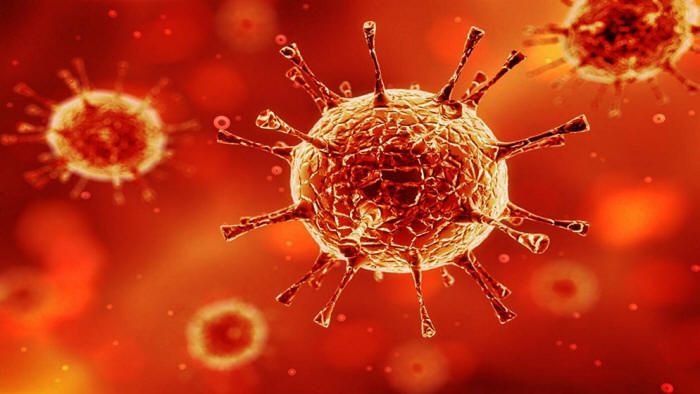|
by Mark Sircus
Despite the fact that pH medicine offers us a key to treating viral infections that is easy, safe and inexpensive, they and even alternative health care providers just cannot wrap their heads around baking soda as one of the most important medicines we can use to fight the coronavirus.
Researchers at the Massachusetts General Hospital (MGH) in the US have uncovered the 'Achilles' heel' of most viruses which plague mankind are on target, there are vulnerabilities that can be exploited but what they are looking at is not practical or helpful in our fight against viral infections.
The so-called 'Achilles heel' (or vulnerable point) of most viruses can be exploited by pulling the pH rug out from under them.
The ability of influenza virus to release its genome under different acidic conditions is linked to the transmission of influenza virus.
The threshold pH at which fusion is first observed can vary among different serotypes of membrane protein hemagglutinin (HA) and may correlate with virulence.
The acid stability of HA has been linked to the successful transmission of virus between avian and human hosts.
Coronavirus infectivity is exquisitely sensitive to pH.
Data suggests that the coronavirus IBV employs a direct, low-pH-dependent virus-cell fusion activation reaction.
Raising pH (to an alkaline state) increases the immune system's ability to kill bacteria, concludes The Royal Free Hospital and School of Medicine in London.
The viruses and bacteria which cause bronchitis and colds thrive in an acidic environment. Keeping our pH in the slightly alkaline range of 6.8-7.2 can reduce the risk and lessen the severity of colds, sore throats and bouts of influenza.
When we thoroughly add alkalinity we invariably have mild attacks of viral infections and the same is true for bacterial and fungus infections.
There is significant decrease in median number of colony forming bacteria and fungi in the lungs of pneumonia patients when sodium bicarbonate is used compared to saline.
Medical scientists have already concluded that a 8.4% solution of bicarbonate is safe inhibitory drug for respiratory bacterial, fungal, and mycobacterial growth.
Slow infusions of NaHCO3 (bicarbonate) can also be used to treat non-anion gap metabolic acidosis and some forms of increased anion gap acidosis, a common enough problem in ICU patients with serious lung infections.
Viruses infect host cells by fusion with cellular membranes at low pH. Thus they are classified as "pH-dependent viruses."
Drugs that increase intracellular pH (alkalinity within the cell) have been shown to decrease infectivity of pH-dependent viruses. Since such drugs can provoke negative side effects, the obvious answer are natural techniques that can produce the same results.
There is no pharmaceutical that can compete with sodium bicarbonate for changing the pH of the bodies fluids.
Fusion of viral and cellular membranes is pH dependent.
In membrane biology, fusion is the process by which two initially distinct lipid bilayers merge their hydrophobic cores, resulting in one interconnected structure.
It has been suggested that the hepatitis C virus (HCV) infects host cells through a pH-dependent internalization mechanism. This HCVpp-mediated fusion was dependent on low pH, with a threshold of 6.3 and an optimum at about 5.5. [2]
When pH drops to 6 or below, rapid fusion between the membranes of viruses and the liposomes occurs. Takeda Pharmaceutical is joining Gilead Sciences and AbbVie as the latest drugmaker to work on developing a coronavirus vaccine.
The experimental drug would be derived from the blood of coronavirus patients who have recovered from the respiratory disease.
pH medicine will definitively work because viruses are pH dependent and sodium bicarbonate is available everywhere and costs almost next to nothing. In hospitals bicarbonate is easily administered intravenously.
Inhibition of vesicular stomatitis virus (VSV) replication in LB cells by interferon (IFN) is pH sensitive.
Using sensitive intracellular pH (pHi) indicators, researchers found that IFN treatment significantly raised the pHi. The increase in pHi correlated with an enhancement of the antiviral activity of IFN by primary amines
These results indicated that the IFN-induced increase in pHi may be responsible for the accumulation of G in the TGN, thereby producing G-deficient virus particles with reduced infectivity. [3]
Solar light is another important factor producing viral inactivation, through the action of UV radiation.
Viruses survive better in the dark than when exposed to sunlight.
The foot-and-mouth disease virus (FMDV) capsid is highly acid labile and tends to dissociate into pentameric subunits at acidic condition to release viral RNA for initiating virus replication.
Understanding Cell Voltage, pH and Oxygen Levels
Wherever the body has low voltage, the cells begin to have problems that get more serious the lower the voltage (pH) goes.
Electrons are necessary for life and are needed for health and in high quantities for healing and the growth of new cells.
Dr. David Brownstein wrote,
The amount of oxygen in cells is determined by voltage.
If a cell has adequate voltage, it will also have adequate oxygen. If cellular voltage is low, the amount of oxygen in the tissues will be low. This applies to metabolism as well.
When voltage and oxygen are low, metabolism becomes anaerobic, which means that oxygen is unavailable...
References
|


